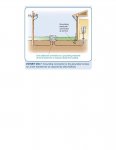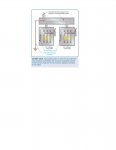shespuzzling
Member
- Location
- new york
Hi,
Wondering specifically about the example in the 2011 NEC, figure 250.7. It shows an outdoor transformer with a ground electrode connected to the secondary neutral conductor. As the feeder enters the building, the neutral is grounded again at the service disconnect.
I am assuming that in both the transformer and the main disconnect switch, the neutral is also bonded to the enclosure and there is an equipment grounded conductor connecting the transformer and the main disconnect switch. Wouldn't this mean that under normal conditions, your neutral current could return back to the source (the transformer) via the equipment grounding conductor? The only thing limiting it would be the impedance of the equipment ground conductor pathway.
Thanks for helping!

Wondering specifically about the example in the 2011 NEC, figure 250.7. It shows an outdoor transformer with a ground electrode connected to the secondary neutral conductor. As the feeder enters the building, the neutral is grounded again at the service disconnect.
I am assuming that in both the transformer and the main disconnect switch, the neutral is also bonded to the enclosure and there is an equipment grounded conductor connecting the transformer and the main disconnect switch. Wouldn't this mean that under normal conditions, your neutral current could return back to the source (the transformer) via the equipment grounding conductor? The only thing limiting it would be the impedance of the equipment ground conductor pathway.
Thanks for helping!




